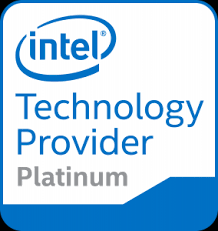
Intel’s Extremely Versatile FPGA
Intel’s revolutionary FPGA (field programmable gate array) is a semiconductor-integrated circuit where a large majority of the electrical functionality inside the device can be changed, even after the equipment has been shipped to clients out in the field. These devices are perfect for AI real-time processing applications, such as specific inference operations, in research institutions.
FPGAs provide benefits to those that design many types of electronic equipment, ranging from smart energy grids, aircraft navigation, automotive driver assistance, medical ultrasounds, data center search engines and many more.
These powerful devices can be customized to accelerate key workloads and enable design engineers to adapt to emerging standards or changing requirements.
Benefits include:
- Customizable and Changeable: FPGA functionality can change with every power-up of the device.
- Ready to Deploy: FPGAs are sold off the shelf vs. ASICs (application-specific integrated circuits) which require manufacturing cycles taking many months.
- Integration: More functions within the FPGA mean fewer devices on the circuit board, increasing reliability by reducing the number of device failures.
- Simple Programming: the large IntelAcceleration Stack for Intel Xeon CPU with FPGAs simplifies development.
- Total Cost of Ownership: Intel FPGAs support long lifecycles (15 years or more), avoiding the cost of redesigning and re-qualifying OEM production equipment when one of the electronic devices onboard ages out.



